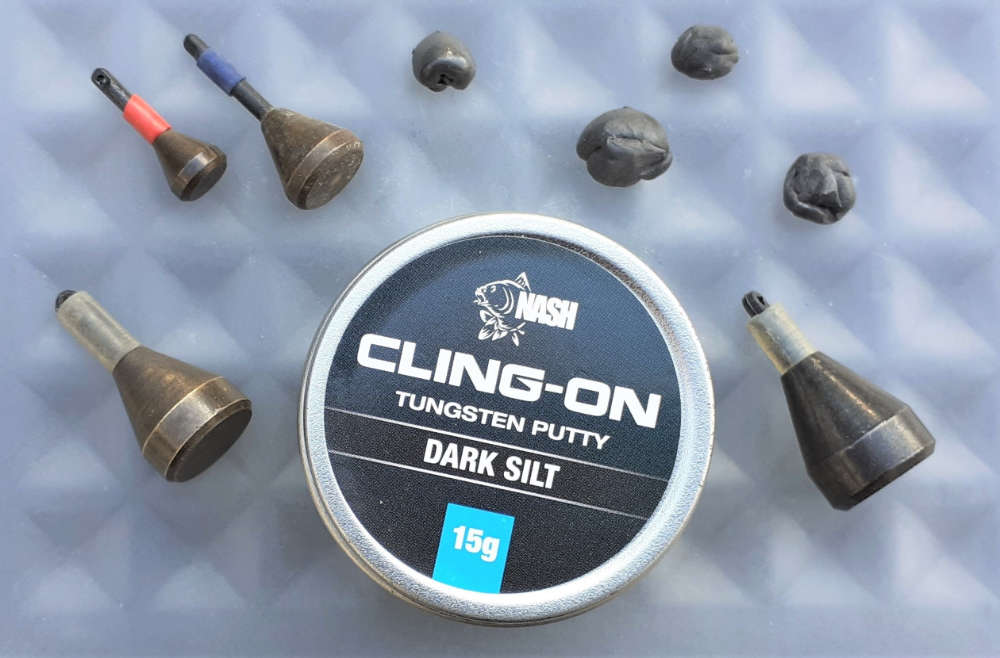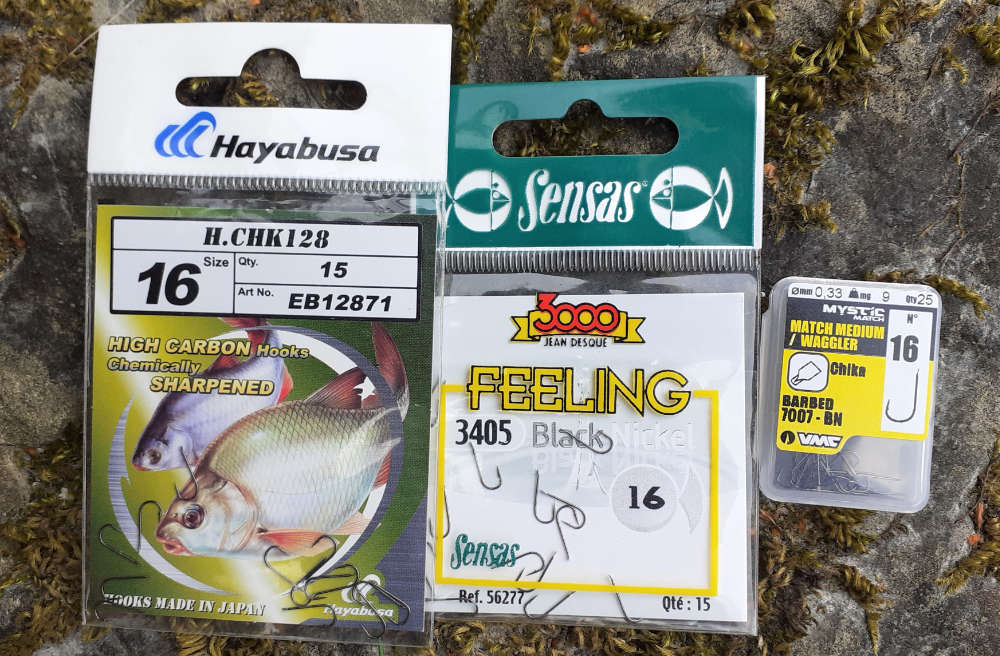Dave Coster’s Top 12 Super Rig Tips
Catching More
Over the years, I’ve picked up many tips from other anglers, also developing ideas of my own, all of which help catch more fish. Simple or complicated, it doesn’t matter if tweaks to end tackle and other related kit result in more bites. Some people keep their successful rig formats to themselves, which is a shame because they probably won’t get anything back. A few top match anglers can be like that, but thankfully the majority are not, happy to pass on their winning ways. A world champion once told me he kept no secrets, saying it was safe to be free with information. His theory was by the time others had got things right, he would have evolved to new levels. Maybe that philosophy was held by all the good souls who helped me along the way. But one thing is for certain, whenever I’m bagging up, there are tricks of the trade that make a big difference to what I catch.

Better Organised
It helps to maximise every second on the bank by being well-organised with vital rig bits. If something goes wrong, or you need to alter the end tackle, valuable time is wasted if you have to rummage through countless packets of accessories to find what’s required. The best way of storing small and often used items, is in the small multi-partitioned boxes carp anglers use. These provide easy access for small things like swivels, float adaptors, various types of links, mini connectors, line stops and method feeder beads. Such compact containers are designed as part of modular systems, so they fit inside larger specimen style tackle boxes. Being on the shallow side, they also conveniently slot in most seat box drawers, or even in a jacket pocket. There are match style versions of these rig bits boxes, but they don’t convince me they are any better than the original carp designs.

In Reserve
In similar fashion to the way I keep essential rig bits stored in small organiser boxes in my seat box, I do the same at home with back up accessories. I’m talking about items like spare PTFE pole bushes, elastic connectors and protectors, also different types of float tips. I store stuff like this and numerous other bits in a modular tackle box, the type carp anglers use. It’s easy to locate what I need if any running repairs or replacements are required when I get home after a trip. Partitioned or single bits boxes can be switched in and out of my main kit, depending on requirements. It’s good to have plenty of back up small accessories because it’s not always convenient to visit a tackle shop, especially if something requires fixing or changing in a hurry. It’s also wise to duplicate end tackle that’s used a lot, just in case items go out of stock, or become discontinued for some reason.

Lighter Plummets
I don’t understand the obsession many have with big, weighty plummets. Some are so heavy they pull loads of elastic out of the end of poles, making finding the right depth more awkward. They also don’t suit light running line gear, overloading refined tackle. Then there is the potential problem of burying deep in soft silt, giving a false reading of what the true depth is. The only time I use heavy plummets is in fast flowing water over hard terrain, where the tackle is strong enough to handle them. If there’s lots of debris on the bottom and soft silt, I use light plummets with short stems and silicone tubing, which anchors the rig above the weight. This helps to stop hook baits becoming obscured when set at full depth. I often use tungsten putty as a plummet as well, especially in weedy swims, burying the hook inside so it can’t get snagged. That ploy works well with waggler tackle too.

Roach Float
This is one of my special shallow pole floats, used mainly for roach when they are competing high in the water for loose feed, especially casters. It started life as a bulbous body design, with a stainless wire stem and a fine diameter fibreglass tip. I left the tip as it was, but whittled down the balsa body into a pencil shape, also replacing the stem with titanium trace wire. The latter doesn’t bend out of shape during heavy usage. I spent ages getting the balance right, so the heavy stem material perfectly cocks the float of its own accord, allowing just three tiny number 13 Stotz weights to be spread out below. This format gives a slow fall of the hook bait, without having to work the tackle upright, resulting in positive bites from even the shiest of big roach. It’s ideal set at depths between 2 and 4 feet, bearing in mind most takes come before the tackle gets a chance to properly settle.

Heli Rig
Helicopter rigs, in combination with maggot feeders, are a great way of catching during the depths of winter. This method has an uncanny knack of cracking hard venues, especially cold affected lakes. I used to employ rubber line stops to anchor short hook lengths in place, but experienced quite a few fish coming off on the way in. I switched to using small Stotz weights instead, deliberately only lightly nipping on the upper one that traps the rotating swivel bead the hook link is attached to. I make sure it moves easily, which is a great safeguard for when fish buffer against the feeder, having the hook set so close. Often the upper stopper slides several inches up the main line, resulting in far fewer fish coming adrift, being easy to slide back. I’ve found Drennan Carp blockends best for this technique because they release maggots far quicker than most other designs, which is important in icy water.

Simple Banding
I’ve tried plenty of fancy ways of attaching pellets, including looped bait bands, quick stops and the tiny plastic stops designed for hair-rigged drilled offerings. All these ways are fiddly and time-consuming, which brought me back to simple latex pellet bands. Firstly, I use a pellet bander with wire prongs, which are easier to insert into small diameter bands compared to plastic versions. This particularly applies when using small 2mm or 4mm gauges. I usually prepare enough hook baits for a session beforehand, which makes a big time-saving difference. I use pre-banded pellets in two ways, slightly wetting a few so they swell up, alongside dry ones. The damp and softer versions are good when targeting fussy silver fish, while hard baits are better when bagging up. I mount banded pellets on the hook’s bend, finding no difference in how fish take them, compared to all the other options.

Strung Out
Many years ago, I met with a top French International on a deep London canal. I thought I knew how to fish one of my favourite match stretches, but this guy turned out to be a wizard on the pole, emptying the place. His secret was using light rigs with strung bulks, something I had never seen before. Where I would use a 1gr float with an olivette, he preferred only half that capacity with slightly spread bulks of number 8 shot. Although he sometimes caught a few small bleak and dace on the way down, this didn’t stop him from bagging up with bigger fish when the hook bait reached full depth. Most better sized samples came just as the tackle settled, telling me they were being fooled by the way the hook bait was behaving. The tackle was also performing differently to an olivette set up, picking up any undertow and moving naturally with it, while a bulked rig was sitting dead still.

Feeder Links
Sometimes a simple idea comes along and you have to take notice. Some feeders have decent links built into them, but with those that don’t, adding a short to medium link makes everything a lot tidier and less tangle prone. It’s a paternoster rig in effect, but a modern tweak is to make everything free running, which is a lot safer than fixed set-ups. After a link has been added, it needs a small anchoring shot or line stop to buffer against on the main line. I prefer to create a short 4 inch twizzled boom in front of it, with a mini swivel installed at the leading end. The hook length is attached to the latter. The stiff boom effect keeps the hook length from tangling back around the feeder, while the small swivel prevents line spin on the retrieve. The feeder boom or link has a snap swivel, which allows sizes or designs to be changed in seconds, or even a switch to a straight leger weight.

Hook Detecting
If you fish carp puddles all the time, finding hooks for the job won’t be a problem, but it’s a different matter locating decent silver fish patterns these days. That’s a job for the Internet or a visit to a specialist tackle shop, even then, certain favourite sizes are often difficult to get. I particularly rate Sensas Feeling Black Nickel 3405 hooks for baits like maggots, pinkies, casters, hemp, and tares. They have a light wire gauge but are incredibly strong, also retaining their sharp points brilliantly. My record was catching an amazing 800 small fish in a session, without having to replace the hook on my busy pole rig. I particularly like the unusual size 17, which is perfect for single maggot or caster presentation, capable of landing bonus big fish on pole or running line tackle. Close alternatives are Hayabusa H.CHK 128s and VMC Mystic Match 7007s. The latter are also hard to find stocks of.

Waggler Connectors
Swivel style waggler connectors are good for two reasons. They allow floats like inserts, straights and bodied designs to be switched without having to break down the end tackle, also being flexible, they collapse on the strike, creating less resistance. Adaptors with bigger sized swivels are best because smaller ones are prone to causing tangles. Another plus factor with bigger swivels is for slider fishing, where the reel line runs through them much more freely. The only thing you need to do is install a small bead on the main line above, which prevents floats running over the stop knot. If I can’t find the right size swivel, I cut one of the eyes off a normal one and push its body into a short length of tough silicon tubing. The best type of swivels are those with no visible coils of wire, where the eyes go straight into their bodies. This type of barrel design never tangles and tends to rotate more freely.

DIY Pellet Feeders
Although there are plenty of pellet feeder designs to choose from, I’ve never managed to find one that does what I want, often having to make modifications. Then I saw a clever angler on YouTube modifying Kamasan Black Cap blockends into a pellet feeder. I tried it, and it works, casting like a dream. The most important bit is the way a pile of micro pellets and my hook bait are released in double quick time. Note the way I cut a bigger opening than most, which helps the pellets to cascade out, along with my baited hook if I bury it. There’s no need for a tail rubber either, which makes everything compact. I also felt tip the feeder to tone it down. All I want the fish to see is a pile of pellets. Another plus factor when you require smaller pellet feeders, is my modified versions have lighter weights. I don’t want them heavy when casting short range. Takes are still just as positive.

